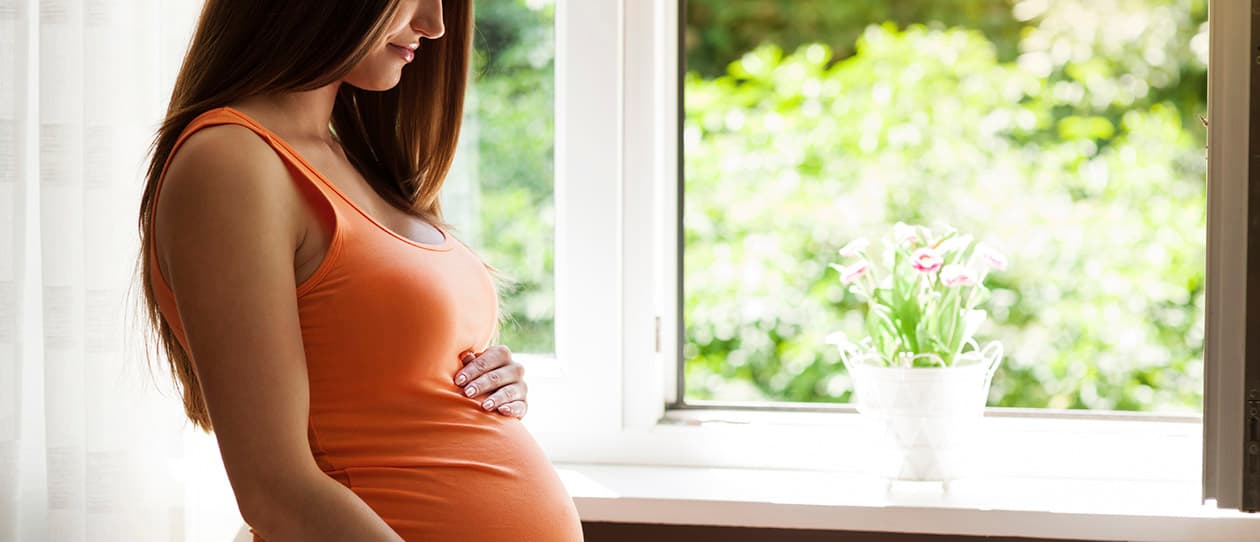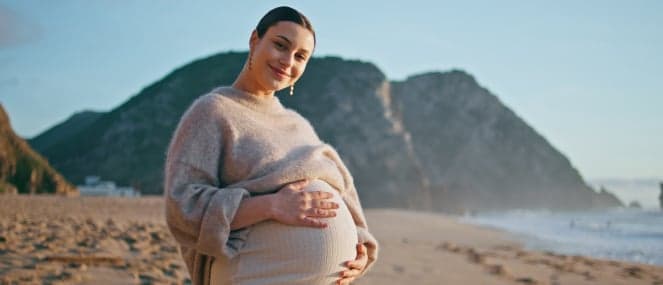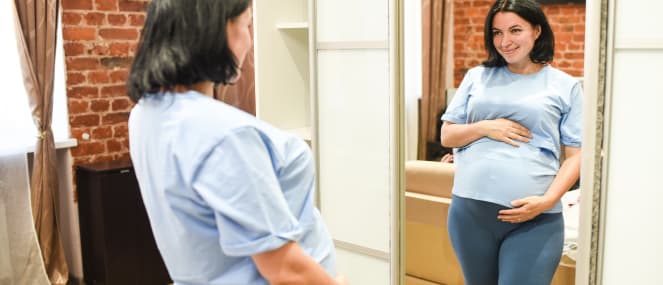
- Health hub/
- Resources for Pregnancy and Preconception/
- Vitamin D - Essential for Building Strong Bones in Babies


Obtaining adequate vitamins is critical for physical and mental development and maintaining overall health during the infant stage. One of these vitamins is vitamin D, which aids calcium absorption from food.
Calcium is an essential mineral for strong bone formation and growth. Bone development in humans starts during pregnancy.
A mother's vitamin D status can affect the amount of calcium in her baby's bones. Pregnant and breastfeeding mothers are identified as a population group at risk of low vitamin D. The NSW Royal Hospital for Women reports that vitamin D is also essential for muscle strength and immune health.
Vitamin D During Pregnancy
According to Westmead Hospital, 90% of vitamin D is made from skin exposure to sunlight; sunscreen can prevent vitamin D from being made.As the NSW Westmead Hospital explains, the mother needs to have sufficient vitamin D levels because her newborn will have the same vitamin D levels. For instance, if the mother has low vitamin D levels during pregnancy, her newborn baby may also have low vitamin D levels.
Low Vitamin D in pregnant women is, therefore, quite common, as the World Health Organisation reports. Its production is dependent on getting enough sun. This is also why a vitamin D supplement may be needed or recommended by a healthcare provider, especially during winter or in climates with little sun exposure.
Pregnancy multivitamins that include vitamin D are available, though the content varies. If they don't contain enough, a standalone vitamin D supplement may also be needed. In all cases, a GP or midwife should be consulted about the correct dosage and product.
Vitamin D for Infants
Some newborns aren't able to receive enough Vitamin D from their mothers during pregnancy, from sun exposure, or through their diet. The milk from both breastfeeding and formula feeding contains vitamin D, but this may not be enough, according to the NSW Westmead Hospital.
If you are using an infant formula fortified with vitamin D, it is best to check with your doctor whether a supplement is needed, as it may depend on how much is in it.
Breastfeeding mothers who have low vitamin D may not pass on enough vitamin D to their babies, so it helps to maintain adequate levels of vitamin D as a mother while breastfeeding.
The amount and type of supplementation can also vary depending on where you live and how much sun exposure you are likely to get in that area.
Vitamin D for older babies and toddler
Ensure children with low vitamin D get enough calcium in their diet.
Children at risk of low vitamin D
Children with very dark skin are at risk of having low vitamin D. The dark colour of their skin (melanin) protects their skin like a natural sunscreen, and according to the Royal Children's Hospital, it may mean they need as much as six times longer in sunlight than fair-skinned people.
Those with low exposure to the sun, medical conditions that affect vitamin D absorption, and babies born prematurely are also at risk of low vitamin D.
Sources of vitamin D
Sunlight is the primary source of vitamin D, which is made in the skin when exposed to sunlight. According to the NSW Royal Hospital for Women, only 10% of vitamin D comes from food.
As Healthy Bones Australia explains, only a few foods contain vitamin D and only in small amounts. These foods include, such as oily fish, eggs, and meat, are food sources. Some foods, such as cereal, margarine, and dairy products, are fortified with vitamin D and labelled accordingly. Dietitians Australia reports that mushrooms can be a good source of vitamin D, especially when exposed to UV light. It suggests placing sliced mushrooms in the sun for an hour to increase their vitamin D content.
Liver and cod liver oil contain vitamin D. However, The Royal Women’s Hospital does not recommend them during pregnancy as they contain too much vitamin A for pregnant women.
It can be challenging to strike the right balance between getting enough sun exposure for your skin to produce vitamin D and increasing the risk of sunburn. All children should use sun protection in all forms possible, especially during summertime between 10 am and 4 pm when the UV level is highest. This is important, especially for those with light skin who have a higher risk of sunburn. According to Royal Women's Hospital, it only takes a few minutes of sun exposure each day during the summer, spring, and autumn months to help maintain healthy vitamin D levels.
Winter can be a challenging time to obtain enough vitamin D, and the NSW Royal Hospital for Women suggests the general population spend time outdoors in the middle of the day on most days of the week. However, some people with an increased risk of vitamin D deficiency are likely to need longer amounts of exposure and to need to supplement with vitamin D to prevent a deficiency. These include those who work most of the day indoors, live somewhere with little sunlight, have low sun exposure due to spending little time outdoors, have dark skin or don’t expose much skin to the sun.
Signs of low vitamin D
Most people who have low vitamin D don't present with symptoms.
However, children with low vitamin D may experience unusual leg, bone or back pains, muscle weakness or cramps.
Low vitamin D can also lead to low calcium, with symptoms of muscle cramps in children.
When to see a doctor
If you are pregnant and unsure or concerned about your vitamin D levels, you can have this tested by your GP with a blood test.
The Royal Children's Hospital recommends that you take your child to the GP if you are worried about their vitamin D levels or if they show low vitamin D or low calcium symptoms.
Supplementation
Low Vitamin D is common in Australia, as reported by one 2023 study in the Journal of Human Nutrition and Dietetics.
As the Royal Children’s Hospital in Melbourne reports, when pregnant, vitamin D levels affect the levels in the baby, so the doctor may recommend supplementation if they test and find your vitamin D levels to be low.
With many different brands and dosages, it's important to consult your GP or maternal health nurse to ensure enough intake and prevent overconsumption.
Healthy Bones Australia reports that low vitamin D levels can be easily corrected but may take several months to improve.
REFERENCES
https://raisingchildren.net.au/teens/healthy-lifestyle/nutrients/vitamin-d
https://www.nuh.nhs.uk/download.cfm?doc=docm93jijm4n3253.pdf&ver=16032




